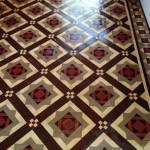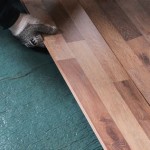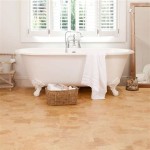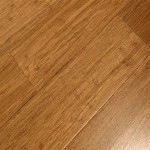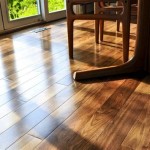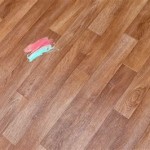Does Double-Sided Carpet Tape Ruin Hardwood Floors?
Hardwood floors are a desirable feature in many homes, appreciated for their beauty, durability, and timeless appeal. Maintaining their pristine condition is a priority for homeowners. One common issue they face is how to secure rugs and carpets without causing damage to the underlying wood. Double-sided carpet tape is often considered a convenient solution for this purpose. However, questions frequently arise about its potential to ruin or harm hardwood floors. This article explores the factors contributing to potential damage from double-sided carpet tape, preventative measures, and alternative solutions.
The adhesive properties of double-sided carpet tape are designed to create a strong bond between two surfaces. While this can be effective for securing rugs, the strength of the adhesive can also pose a risk to the finish and integrity of hardwood floors. The potential for damage varies depending on several factors, including the type of tape used, the type of finish on the hardwood floor, the duration the tape is applied, and the method used to remove it.
The primary concern with double-sided carpet tape is its adhesive residue. When the tape is removed, it often leaves behind a sticky residue that is difficult to clean. This residue attracts dirt and debris, creating a stubborn mess. Furthermore, attempts to remove the residue can inadvertently damage the floor's finish if harsh chemicals or abrasive cleaning methods are used. The finish on hardwood floors, which provides protection and aesthetic appeal, is a delicate layer that can be easily compromised.
Another way double-sided carpet tape can damage hardwood floors is by pulling up the finish. Certain types of tape have an exceptionally strong adhesive that can bond directly to the floor's finish. When the tape is removed, it can tear away the finish, leaving behind unsightly patches of bare wood. This damage is often irreversible without professional refinishing, which can be a costly and time-consuming process.
Understanding the Types of Double-Sided Carpet Tape
Not all double-sided carpet tapes are created equal. They vary significantly in adhesive strength, material composition, and intended use. Some tapes are designed for temporary use and are advertised as being residue-free. However, even these tapes can potentially cause damage, especially when left on the floor for extended periods or exposed to temperature fluctuations.
Heavy-duty carpet tapes are designed to provide a more permanent bond and are typically used in commercial settings or for securing carpets in high-traffic areas. These tapes have a very strong adhesive that can easily damage hardwood floors. The aggressive adhesive is more likely to leave behind residue and pull up the finish during removal.
The backing material of the tape also plays a role in its potential to cause damage. Some tapes have a cloth backing, which can be more porous and absorbent. This can allow the adhesive to seep into the floor's finish, creating a stronger bond and increasing the risk of damage. Other tapes have a plastic or film backing, which may be less likely to allow the adhesive to penetrate the finish but can still leave behind residue.
Before using any type of double-sided carpet tape on hardwood floors, it is crucial to carefully read the product label and understand its intended use and removal instructions. It is also advisable to test the tape in an inconspicuous area to assess its potential impact on the floor's finish.
Factors Influencing the Severity of Damage
The severity of damage caused by double-sided carpet tape can be influenced by several factors beyond the type of tape used. These factors include the type of finish on the hardwood floor, the duration the tape is applied, and the environmental conditions, such as temperature and humidity.
Hardwood floors are typically finished with either a surface finish or a penetrating finish. Surface finishes, such as polyurethane, create a protective layer on top of the wood. While these finishes offer good protection against wear and tear, they can be susceptible to damage from strong adhesives. Penetrating finishes, such as oil-based finishes, soak into the wood and offer a more natural look and feel. However, they may not provide as much protection against adhesive residue and finish removal.
The duration the tape is applied to the floor is another critical factor. The longer the tape remains in place, the more likely it is to bond with the finish and leave behind residue. Over time, the adhesive can harden and become more difficult to remove, increasing the risk of damage during removal. It is generally recommended to remove the tape as soon as it is no longer needed to minimize the potential for damage.
Temperature and humidity can also affect the performance of double-sided carpet tape. High temperatures can cause the adhesive to soften and become more likely to seep into the floor's finish. High humidity can also weaken the adhesive bond, leading to the tape becoming loose and leaving behind residue. Maintaining a stable indoor climate can help minimize these effects.
Safe Removal Techniques and Alternative Solutions
If double-sided carpet tape has already been applied to a hardwood floor, careful removal techniques can help minimize the risk of damage. Patience and gentle methods are key to preventing further harm to the finish.
One common method for removing carpet tape is to gently heat the adhesive with a hairdryer. The heat softens the adhesive, making it easier to peel away without damaging the finish. It is important to keep the hairdryer moving and avoid overheating the area, as excessive heat can also damage the floor. After heating the tape, use a plastic scraper or putty knife to gently lift the edge of the tape and slowly peel it away.
If residue remains after removing the tape, several methods can be used to clean it. Mineral spirits can be effective for dissolving adhesive residue, but it is important to test it in an inconspicuous area first to ensure it does not damage the finish. Apply the mineral spirits to a clean cloth and gently rub the residue until it dissolves. Follow up with a clean, damp cloth to remove any remaining mineral spirits.
Another option is to use a specialized adhesive remover designed for hardwood floors. These products are formulated to safely remove adhesive residue without damaging the finish. Always follow the manufacturer's instructions carefully when using these products.
Preventative measures are always the best approach. Instead of using double-sided carpet tape, consider alternative solutions for securing rugs and carpets on hardwood floors. These alternatives include using rug pads, anti-slip mats, or furniture to hold the rug in place.
Rug pads are designed to provide cushioning and prevent rugs from slipping. They also help protect the floor from scratches and wear. Choose a rug pad that is specifically designed for hardwood floors and made from a non-slip material.
Anti-slip mats are another option for securing rugs. These mats are typically made from rubber or other non-slip materials and are placed under the rug to prevent it from moving. They are available in various sizes and shapes to fit different rugs.
Positioning furniture strategically can also help hold rugs in place. Placing heavy furniture, such as sofas or chairs, partially on the rug can prevent it from shifting and reduce the need for adhesive products.
In conclusion, while double-sided carpet tape may seem like a convenient solution for securing rugs on hardwood floors, it poses a significant risk of damage. Understanding the potential hazards, using appropriate removal techniques, and exploring alternative solutions can help homeowners protect their hardwood floors and maintain their beauty for years to come. Careful consideration and proactive measures are essential for preserving the value and aesthetics of hardwood flooring.

Pros And Cons Of Applying Rug Tape On Your Floors Carpets Rugpadusa

Will Double Sided Carpet Tile Tape Leave A Sticky Residue Or Damage My Floor

Types Features And Specific Uses Of Carpet Tape

Xfasten Double Sided Carpet Tape Heavy Duty 2 X 30 Yds Residue Free For Area Rugs Over Keep Rug In Place Hardwood

Xfasten Double Sided Carpet Tape For Area Rugs Heavy Duty Residue Free Rug And Hardwood Floors Indoor Outdoor 2 Inch By 10

Roberts Indoor Or Outdoor 15 Ft Double Sided Carpet Tape Roll 50 605 12

Pros And Cons Of Applying Rug Tape On Your Floors Carpets Rugpadusa

How To Remove Double Sided Carpet Tape From A Wood Floor

How To Remove Double Sided Carpet Tape From A Wood Floor

Types Features And Specific Uses Of Carpet Tape
See Also
